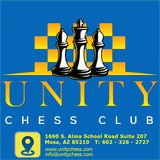The Beastly Bishop
A knight on a central outpost on the sixth (or third) rank - a.k.a. the octopus - is almost invariably a terrific force. A bishop on the same spot may very well paralyze the opponent's forces in a similar way.
A knight on a central outpost on the sixth (or third) rank - a.k.a. the octopus - is almost invariably a terrific force. A bishop on the same spot may very well paralyze the opponent's forces in a similar way.
Back inside the Chain
Developing your bishops outside the pawn chain is the natural thing to do. And often the right thing to do. But sometimes one has to retrace one's steps.
Developing your bishops outside the pawn chain is the natural thing to do. And often the right thing to do. But sometimes one has to retrace one's steps.
Not an obvious move, this deactivation of the bishop! The attempt to open up the position for the bishop pair with 16.e4 dxe4 17. Nxe4 can be met by 17...Nd5, so Smyslov decided to develop his light-squared bishop via square f1 after e2-e3.
Intending to meet 18.Bf1 with 18...Nd6. Now that the knight has relinquished control over the dS-square, Smyslov immediately changes tack.
Ignoring the Threat
Sacrifices may occur at unexpected moments. One surprise factor is when a threat to gain material does not produce a logical response but is answered by a counter-reaction that had not been anticipated at all.
Sacrifices may occur at unexpected moments. One surprise factor is when a threat to gain material does not produce a logical response but is answered by a counter-reaction that had not been anticipated at all.
By moving his queen to g4 White has just posed the threat of Bh6 , which would win the exchange.
Ignoring the threat, and using the time and extra pawn to seize the center.
